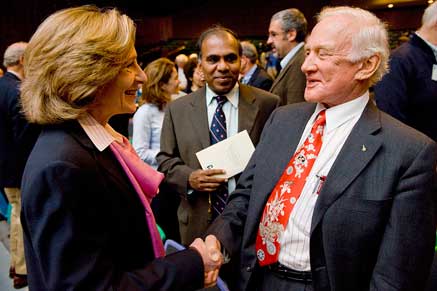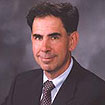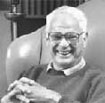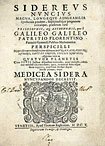| |
JUNE 2009
In this issue:
1. HONORS AND RECOGNITION
2. GIANT LEAPS GIANT SUCCESS
3. FLY TO THE MUSEUM
4. AVIDYNE PRESENTS FELLOWSHIPS
5. CRAWLEY NAMED TO NASA REVIEW
6. AEROASTRO TWEETS
7. SPACE VIDEOS POSTED
8. TRANSITION PASSES PROOF OF CONCEPT
9. LFM NOW LGO
10. CIRCULATING IN ORBIT
|
| |

1. Honors and recognition
Professor Oli de Weck received a special commendation for his contribution to the International Council on Systems Engineering's Space Systems Working Group. The group received an Outstanding Achievement Award at the INCOSE 2009 Workshop.
And, Oli de Weck and Professor Dava Newman are featured in the June issue of IEEE Spectrum; Dava in the article "What to Wear on Mars" and Oli in "What to Pack for Mars."
Congratulations to AeroAstro research scientist Ngoc-Cuong Nguyen, member of a three-person research team that received Springer Publishing's 2009 Computational Science and Engineering Prize. The team developed the software package rbMIT, which solves parametrized partial differential equations by the reduced basis method. The reduced basis method has potential advantages over classical numerical methods for real-time or many-query contexts.
Professor Brian Wardle's research is featured in the article "A Stitch in Time — Nanotechnology: A new way to prevent flaws in composite Materials," which appeared in the Economist on June 4.
"What Do You Want to Be? Explore Aerospace," a book for young readers published by Sally Ride Science, is about to be updated and, like the previous edition, will include a profile of Professor Nancy Leveson. The book features 12 bios of contemporary women including aerospace, biomedical, and navigation engineers; mission designers; and others. |
|

2. Giant Leaps giant success
By any measure, last week's Giant Leaps AeroAstro celebration of the moon landing's 40th anniversary was an unprecedented success — from the tribute to late NASA Associate Director/School of Engineering Dean Bob Seamans; to the Symposium that brought together such icons and luminaries as Buzz Aldrin, Jack Schmitt, Ted Sorenson, Chris Kraft, and John Holdren; to our sold-out Pops concert with Buzz narrating selections from The Planets Suite before more than 2,000 attendees. But, we're not done yet with the project. An edited video of selections from the Symposium highlights is in the planning as is an accompanying publication featuring both text and photos. It is also anticipated that the video of the entire event will be available for viewing on the department's video web page.

At the Giant Leaps celebration, MIT President Susan Hockfield greets former astronaut Buzz Aldrin as School of Engineering Dean Subra Suresh looks on. (Justin Knight photo)
|
|

3. Fly me to the MIT Museum
From now through September, the MIT Museum is featuring the exhibit "MIT Goes to the Moon." The display includes rare Apollo-era artifacts that tell the story of the major contributions made by MIT to the American space program. Included is an extremely rare Apollo Guidance, Navigation, and Control system simulator on loan from Draper Laboratory for its first ever public showing. The museum, 265 Mass. Av., is open daily from 10-5 and is free with MIT i.d.

MIT Museum Science and Technology curator Debbie Douglas explains the Apollo Guidance, Navigation, and Control simulator to BBC science correspondent Tom Feilden. (William Litant photo)
|
|

4. Avidyne presents two with grad fellowships
Avidyne Corporation, a leading provider of general aviation integrated flight deck and safety systems, has announced the 2009 AeroAstro recipients of its Avidyne Graduate Fellowships. The recipients are Abhizna (Abhi) Butchibabu, a recent graduate of Georgia Institute of Technology and a private pilot; and Diana Siegel formerly of the University of Queensland, who has worked as an avionics engineer at EADS and Luftansa-Technik. The fellowships were established by MIT alumnus and Avidyne President Dan Schwinn. AeroAstro head, Prof. Ian Waitz, said, “These fellowships enable us to attract and support two exceptional students.We're grateful to Dan for this significant contribution to support students who we expect will be future aerospace leaders." |
 Ed Crawley Ed Crawley
|

5. Crawley named to NASA space review group
NASA has announced the members of its new Review of U.S. Human Space Flight Plans Committee and one of these 10 individuals is AeroAstro Professor and former department head Professor Ed Crawley. The committee will perform an independent review of U.S. human space flight plans, examining ongoing and planned NASA development activities and potential alternatives to present options for advancing a safe, innovative, affordable and sustainable human space flight program following the space shuttle's retirement. The committee will present its results this summer. A pdf of the committee's charter is available at http://www.nasa.gov/pdf/353935main_RUSHSFPC_charter.pdf |
| |

6. AeroAstro Tweeting
AeroAstro news and announcements are now available to Twitter users. Follow our tweets to keep up with all the latest department info. |

Bob Seamans Tribute is one of the new videos posted
|

7. Space videos posted
Several newly-posted AeroAstro space-related videos are available for viewing at MIT Web sites. "Transitioning from the Space Shuttle to the Constellation System," an April 15 talk William Gerstenmaier, NASA's Associate Administrator for Space Operations and former International Space Station program manager. A special "Happy 40th Apollo!" page offers six streaming videos: "Trip to the Moon/Legacy of Apollo" with Apollo 17 astronaut Jack Schmitt delivering the annual Gardner Lecture in 2003; "Space Shuttle Discovery Mission to the International Space Station (STS-121)," with astronaut Stephanie Wilson; "Space Shuttle History" lecture with Professor Aaron Cohen; "Mission Control" lecture with former NASA director Chris Kraft; and the two short videos produced for the recent AeroAstro Apollo anniversary program, also available on the AeroAstro Web site.
|
|

8. Transition completes proof of concept tests
The many in the department who are closely following progress of alums Anna Mracek Dietrich, Carl Dietrich, and Sam Schweighart's flying car "Transition" will be pleased to learn that on June 3 they successfully completed the vehicle's flight testing program designed for its proof of concept. According to Anna, they are now at work on their Beta Prototype and delivery of the first production machine is expected in 2011. The three began work on the project when they were AeroAstro grad students. |
|

9. LFM now LGO
The MIT Leaders for Manufacturing program has changed its name to Leaders for Global Operations. According to an LGO press release, "This new identity reflects the expansion from LFM's historically broad understanding of manufacturing to encompass all aspects of operations." LGO will now address operations challenges beyond such traditional manufacturing sectors as automotive, aerospace, and high tech manufacturing, to include supply chain retailers such as Amazon.com. A number of LGO grad students also receive a degree from AeroAstro. |

Page from Sidereus Nuncius
|

10. Circulating in orbit
When the Space Shuttle Atlantis returned to Earth on May 24, it was carrying a volume owned by the MIT Libraries – the Libraries' first book to orbit the Earth. Astronaut and MIT alumnus Mike Massimino, through contact with AeroAstro Professor Dava Newman, offered to “fly” a book from the Libraries’ collection. Because this NASA mission to repair the Hubble was scheduled to coincide with the 400th anniversary of the invention of the telescope, the Libraries sent into space a numbered, limited-edition facsimile of Galileo’s landmark 1610 publication Sidereus Nuncius, in which he announced his discovery of, among other things, four of Jupiter’s moons.
|
|
If you know of events, honors, activities, or other information you'd like to see in the next issue of AeroAstro enews, please send to wlitant@mit.edu — we'd be pleased to include your submissions. |
© 2009 MIT Department of Aeronautics and Astronautics. All rights reserved. |
|



 Ed Crawley
Ed Crawley
